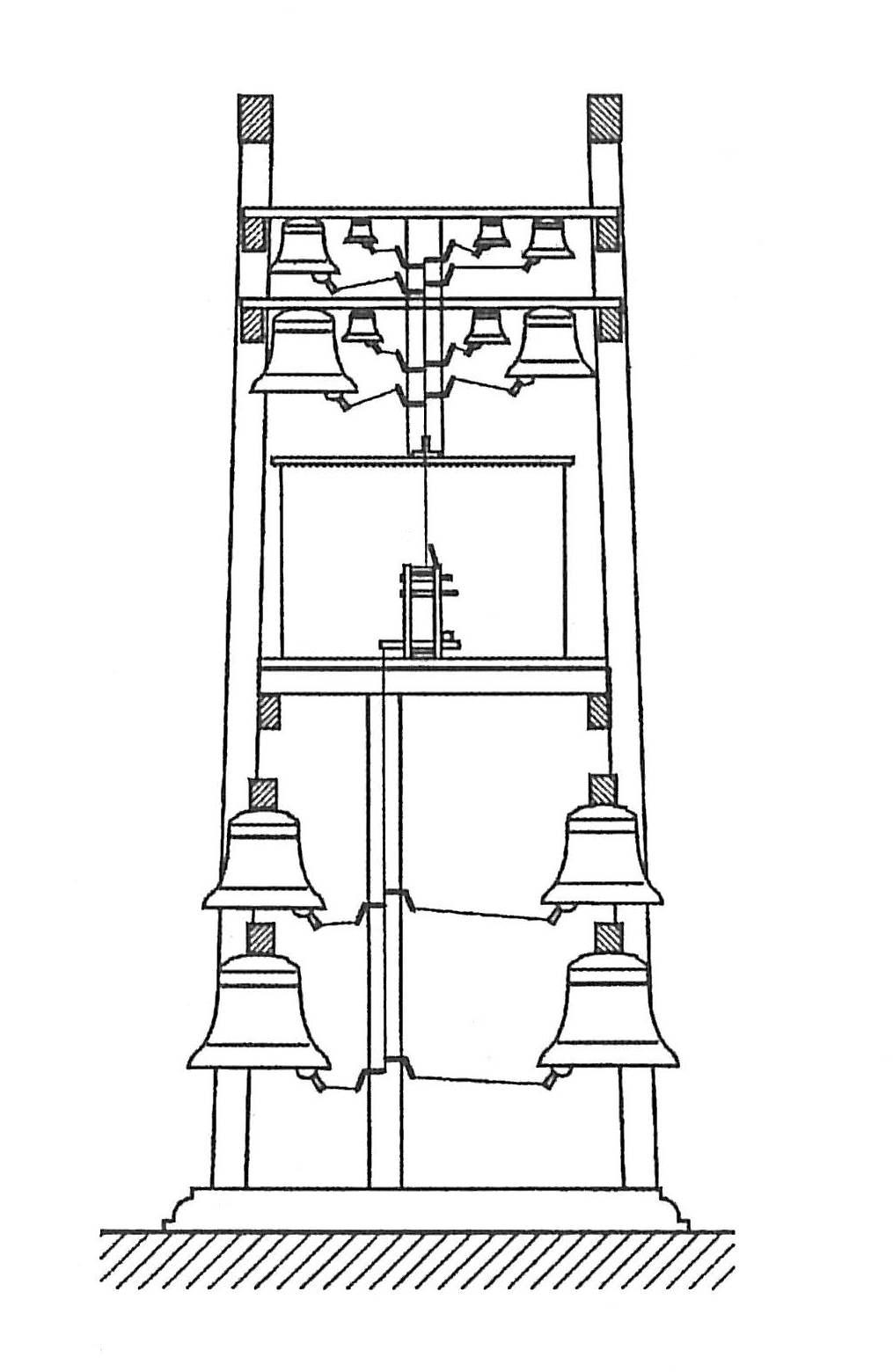
 |
|
| Bellframe with carillon console in the middle. The carillonneur sits in the middle of the bells so that the wires connecting the playing console to the bell clappers can be kept as short as possible to give the carillonneur maximum control over the way the bells are struck. Drawing from André Lehr, Leerboek der campanologie, Asten, 1976, used with the kind permission of the Nationaal Beiaardmuseum, Asten, the Netherlands. | The connection between the baton of a carillon console and the bell clapper. The clapper is positioned close to the bell so that the carillonneur only has to move it a small distance when playing. Drawing used with the kind permission of the Guild of Carillonneurs in North America. |